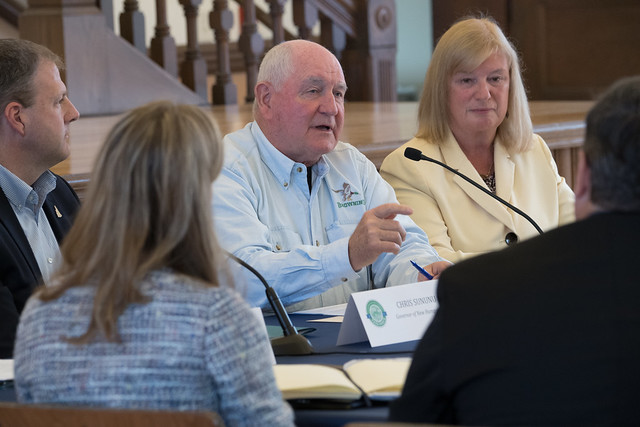
Every day, more than 90 Americans die after overdosing on opioids. That’s three people every hour.
As if the death rate wasn’t bad enough, the Centers for Disease Control and Prevention (CDC) estimates that the “economic burden” of prescription opioid misuse in the United States is $78.5 billion a year, including the costs of healthcare, lost productivity, and addiction treatment.
Despite the grim subject matter depicted in TV and movies, opioid addiction is not confined to big cities. The effects of the opioid epidemic are more intense in rural communities where employment opportunities are often limited and isolation is pervasive. Between 1999 and 2015, opioid death rates in rural areas have quadrupled among those 18-to-25-year-olds and tripled for females.
Perhaps most troubling is a fast-growing class of opioid victims had no say in the matter. In 2012, an estimated 21,732 babies – one every 25 minutes – were born with opioid withdrawal symptoms, a condition known as Neonatal Abstinence Syndrome (NAS). According to a study by University of Michigan and Vanderbilt University, NAS has risen twice as fast in rural areas compared with metropolitan areas.
Healthcare plays a pivotal role in the treatment and prevention of addiction, but its outreach education resources are limited, particularly in rural areas. Fortunately, the Cooperative Extension Services managed by land-grant universities in each state are well positioned at the local level to provide free or low-cost prevention education activities designed to help improve mental and physical health and reduce pain. Such measures may serve to decrease opioid prescriptions and the potential for subsequent abuse.
“The opioid epidemic knows no boundaries. It has cut through communities of all sizes and families of all socio-economic backgrounds,” Agriculture Secretary Sonny Perdue said during an October 2017 interview with Successful Farming. “The president has recently directed each member of his administration to use all appropriate resources to combat the opioid epidemic, and USDA will rise to that challenge.”
Secretary Perdue chaired the Interagency Task Force on Agriculture and Rural Prosperity in response to President Donald J. Trump’s Executive Order of April 25, 2017. On Jan. 8, 2018, he submitted the task force’s findings. The report identified over 100 recommendations for the federal government to consider in order to help improve life in rural America. The recommendations centered on these five areas: Achieving e-Connectivity in America, Improving Quality of Life, Supporting a Rural Workforce, Harnessing Technological Innovation, and Developing the Rural Economy.
One of those areas – Improving Quality of Life – directly address the opioid use and abuse.
“Improved access to mental and behavioral care, particularly access to prevention, treatment, and recovery resources is vital to address the nationwide opioid crisis and other substance misuse in rural communities. The Task Force recommends a multi-agency approach to align federal policies and programs for rural healthcare modernization… Within existing resources, a more efficient deployment of current taxpayer resources can more effectively address the rural healthcare needs,” the report cited.
USDA’s National Institute of Food and Agriculture (NIFA) in November awarded $2.8 million in grants to support rural health. Of the nine awards funded by NIFA’s Rural Health and Safety Education (RHSE) Competitive Grant Program, six were designed specifically to prevent and reduce opioid abuse. The projects include education programs in Arkansas, Indiana, and Virginia; an intervention program in Iowa; and community engagement in Mississippi. In North Carolina, 4-H is partnering with the NC Office of Rural Health and county-based agencies to reach youth and families with health and wellness information that focuses on building strong families and substance abuse prevention.
“While the opioid epidemic affects both rural and urban areas, the rise in natural cause mortality is largely a rural problem and represents a growing threat to quality of life and rural prosperity,” the report cited. “If these trends are left unaddressed, the rural population will not only continue to decline but the dependency ratio will increase.”
NIFA’s mission is to invest in and advance agricultural research, education, and extension to solve societal challenges. NIFA’s investments in transformative science directly support the long-term prosperity and global preeminence of U.S. agriculture. To learn more about NIFA’s impact on agricultural sciences, visit nifa.usda.gov/impacts, sign up for updates, and follow us on Twitter @USDA_NIFA and #NIFAImpacts.

